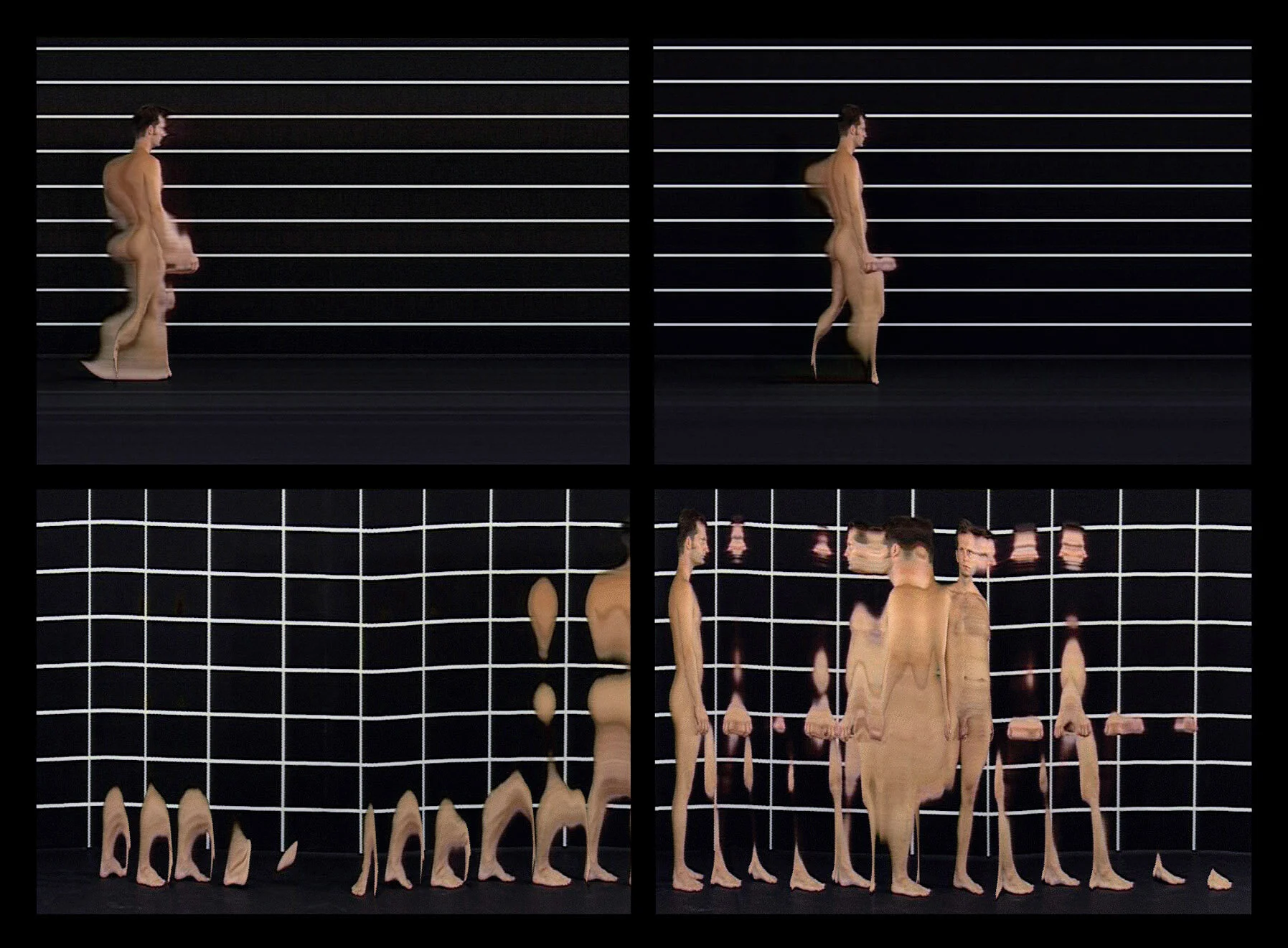tx-transform
⭆ Film & Art | Swapping time and space since 1992
»tx-transform« is a film technique developed by Martin Reinhart in 1992. It transposes the time axis (t) and the space axis (x) with one another in film.
Normally, each individual frame of film depicts the entire space but only a moment in time (1/24 second). With tx-transformed films, it is just the opposite: each frame shows the entire time but only a tiny portion of space (the left side of the picture is before, the right side is after). A simple way to understand tx-transformation is to imagine a flip-book showing sequential pictures which, when rapidly riffled with the tip of the thumb, produces the illusion of motion. Like a reel of film, this toy contains all the spatial aspects of motion and can be understood as an information block. Normally, this block is riffled from front to back along the time axis to create the illusion of a motion picture. tx-transform riffles through this information block in quite a different way: it cuts through the space axis instead of the time axis.
The result of these space cuts through the information block is a series of astounding visual effects: houses start to move, heads grow out of themselves, moving trains become shorter and shorter with increasing speed and much more. The result of a tx-transformation can appear to be completely abstract or completely realistic, depending on the type of shot being made. »tx-transform« was presented for the first time at the Ars Electronica festival 98 to an international audience. The first use of »tx-transform« in an artistic work was the short film of the same name by Martin Reinhart and Virgil Widrich. The most current works are the 360° film »tx-reverse« (2019) and the interactive installation »tx-mirror« (2018).
For more information please consult my website tx-transform.com
